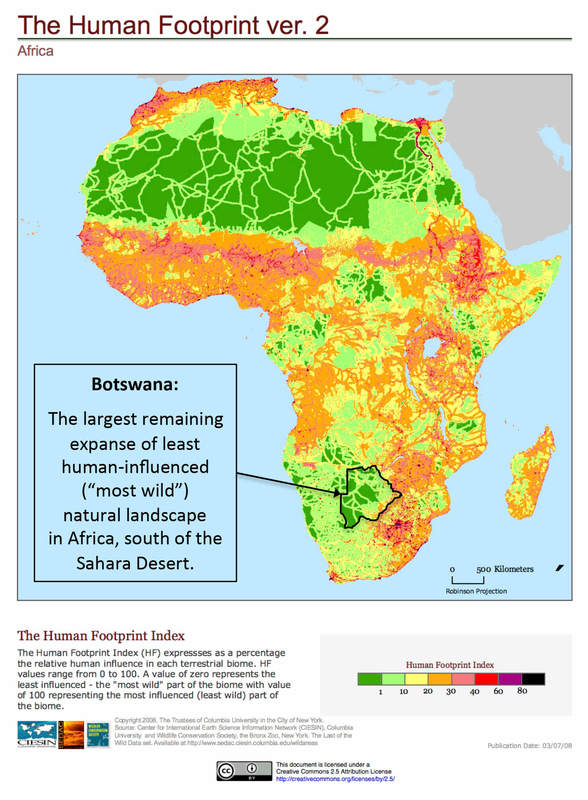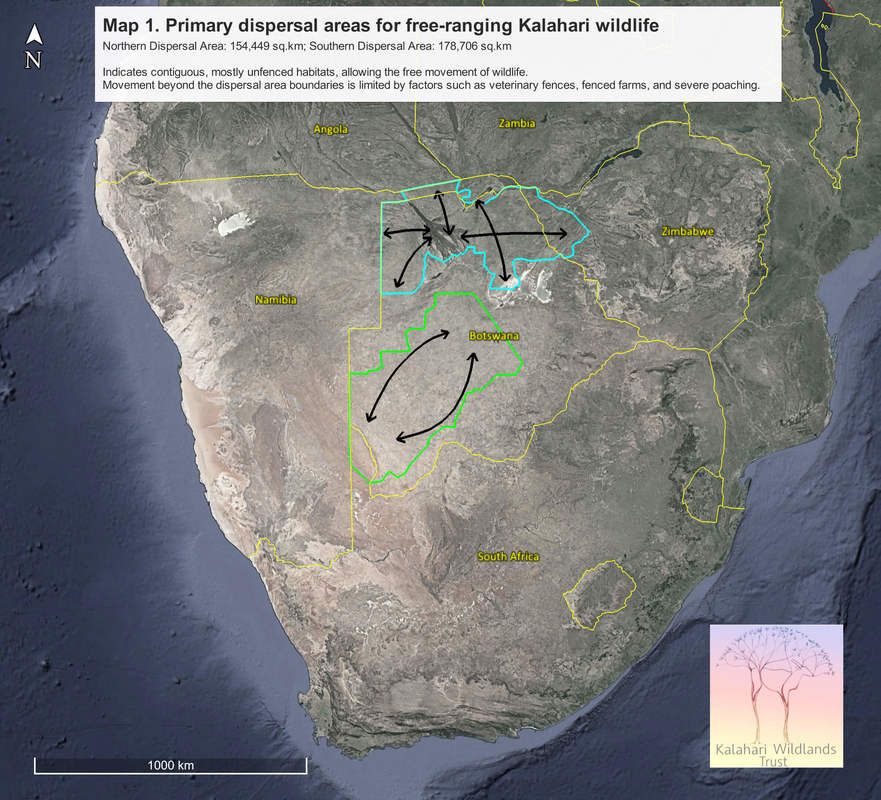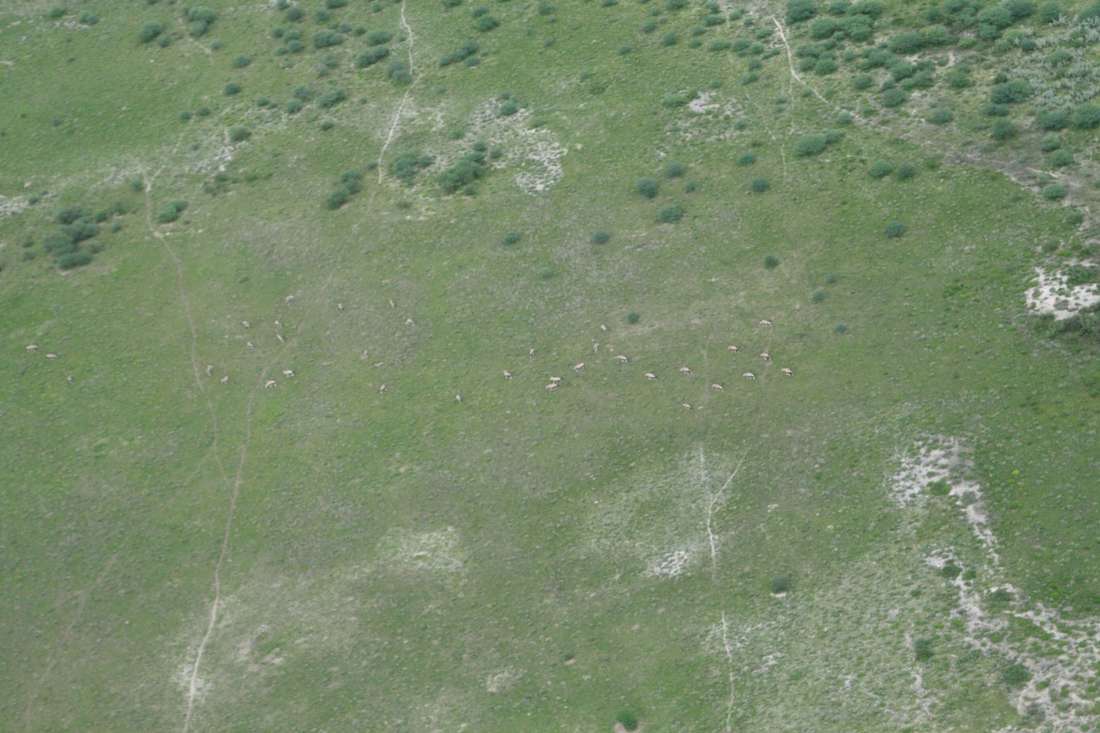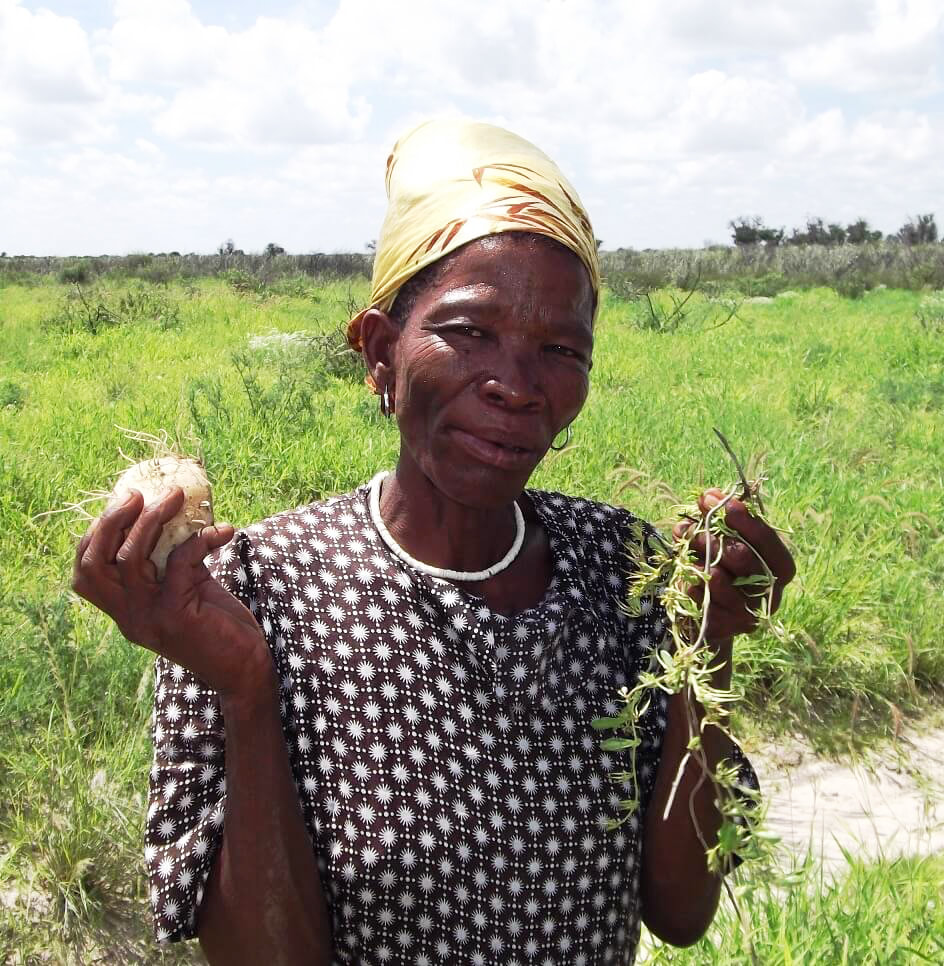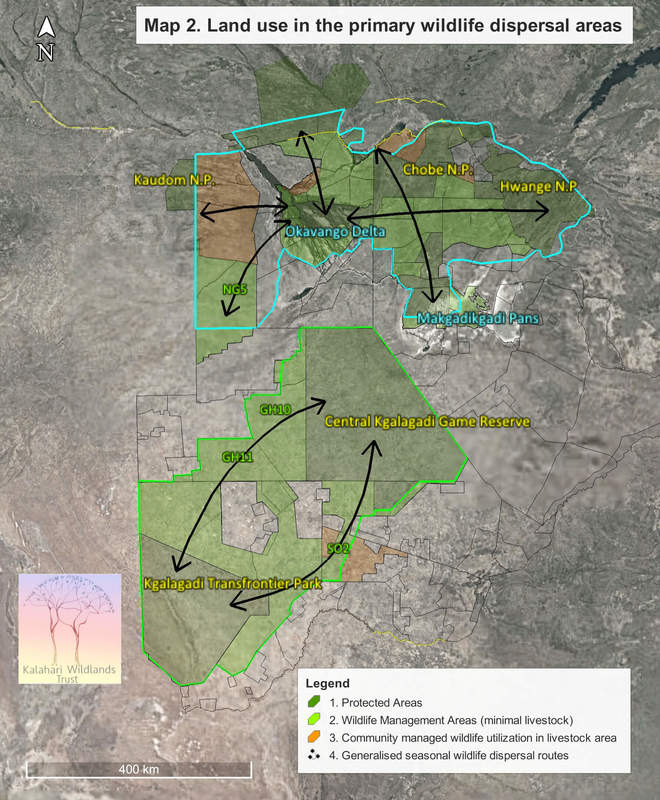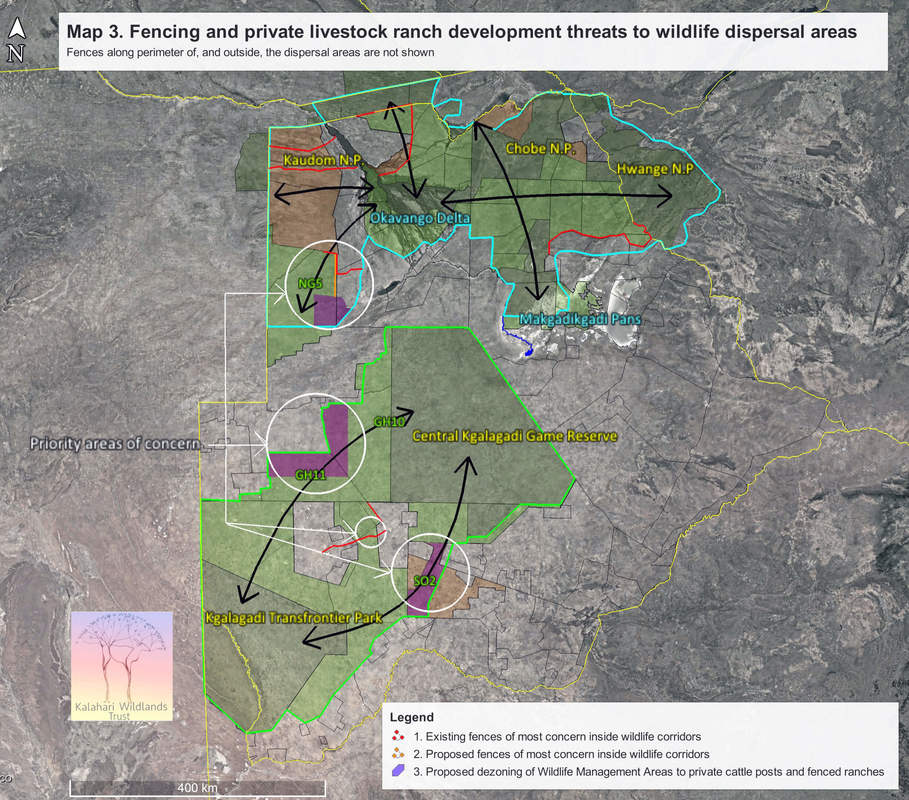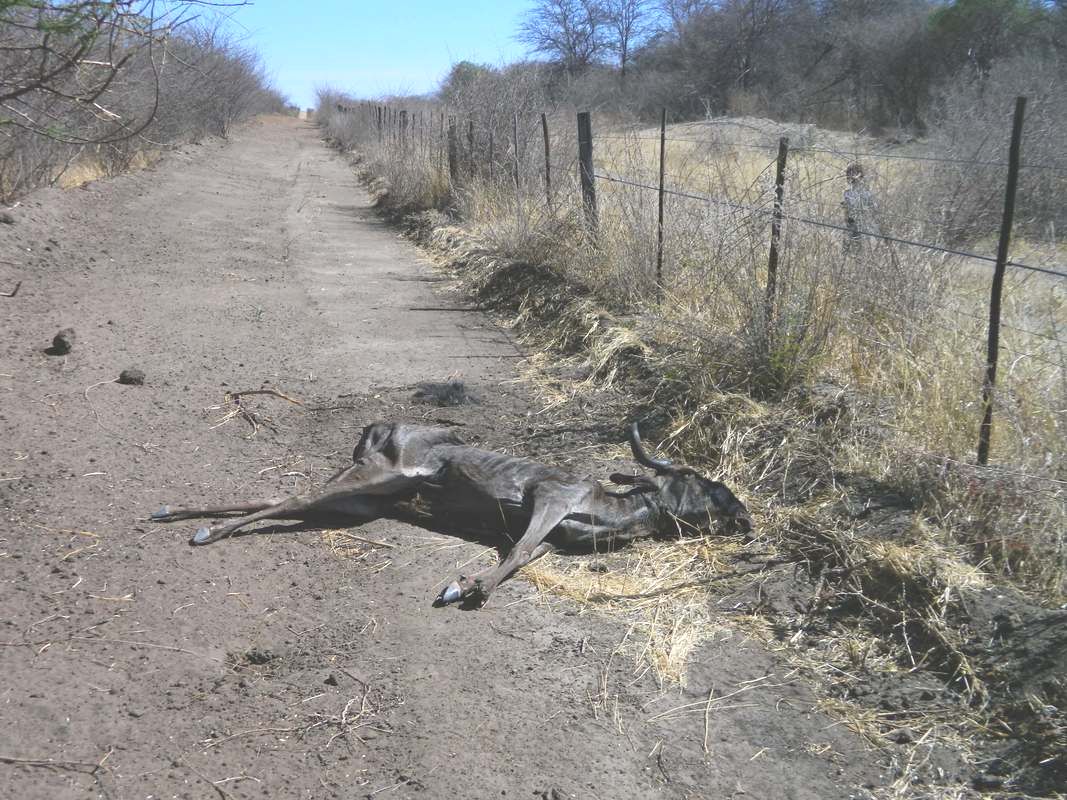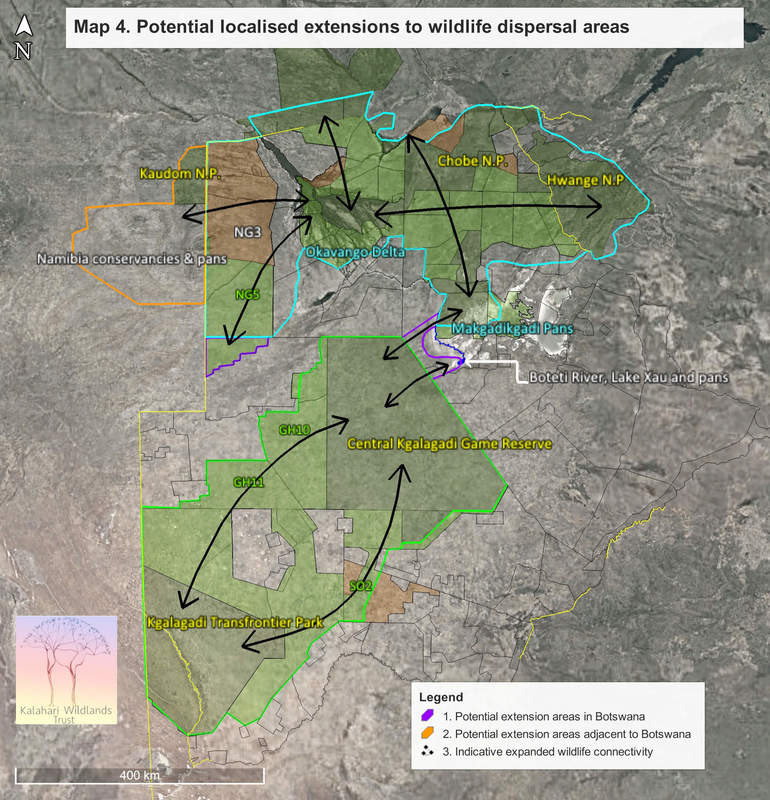Botswana encompasses Sub-Saharan Africa's largest and least human-impacted wilderness areas:
There are essentially two relatively unfenced wilderness areas allowing the free movement of wildlife:
The combined size of these wildife dispersal areas - amongst Earth's last few remaining examples -
is larger than the country of Malaysia or the US state of New Mexico.
The combined size of these wildife dispersal areas - amongst Earth's last few remaining examples -
is larger than the country of Malaysia or the US state of New Mexico.
Yet only 42 % of these wildlife dispersal areas are under formal protection and reasonably safe from
unsustainable land use and development:
unsustainable land use and development:
Livestock development and fencing is the primary cause of habitat loss in the wildlife dispersal areas:
Preventing further habitat loss, mitigation of fencing impacts, and the creation of new corridors, is essential to reversing current wildife declines and rehabilitating populations towards their ecological and economic potential:
